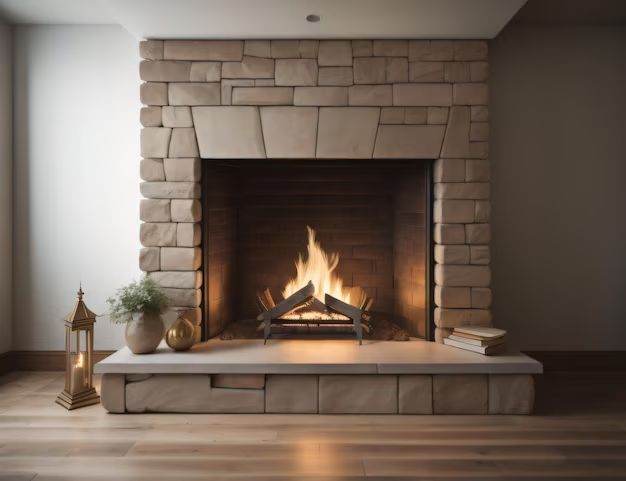Gas fireplaces provide warmth and ambiance to a room. However, some models can allow cold air to enter the room, creating an unwelcome draft. There are several steps you can take to make your gas fireplace less drafty.
Page Contents
Quick Fixes
Here are some quick and easy ways to cut down on draftiness from your gas fireplace:
– Close the damper when not in use. The damper is a plate or valve that stops airflow through the chimney when closed. Keeping it shut when the fireplace is off prevents outside air from entering the chimney and room.
– Check the seal on the glass doors. Over time, the gaskets around glass fireplace doors can become warped or damaged, allowing air to pass through. Inspect the gaskets and replace them if they are cracked or loose.
– Adjust the chimney cap. Chimney caps are designed to let smoke and exhaust out while keeping rain, animals and downdrafts from entering the chimney. Make sure yours is not askew or missing, allowing air flow down the flue.
– Use a fireplace plug. When the fireplace is not running, place an inflatable chimney balloon or other plug inside the flue. This creates a barrier to seal the chimney opening and prevent air from flowing down.
– Add weatherstripping. Applying weatherstripping tape or removable caulk strips around the fireplace opening seals gaps where cold air can sneak into the room. Remove or replace them seasonally when you use the fireplace.
Maintenance Solutions
In addition to quick fixes, consider these maintenance tactics for reducing drafts from your gas fireplace long-term:
– Have the chimney cleaned and inspected. Over time, creosote buildup or small animal nests in the chimney can restrict airflow. A chimney sweep can clean it out and check for any cracks or damage that can make it prone to downdrafts.
– Check the chimney terminations. Make sure the chimney cap is the appropriate style and size for your chimney pipe. Oversized or incorrectly shaped caps can allow rain, debris and excessive air in.
– Inspect the damper mechanism. Faulty or misaligned damper hinges, blades or seals will render it less effective at controlling airflow. Have a professional inspect and fix any issues.
– Upgrade the doors. If your glass fireplace doors are outdated or ill-fitting, replacing them with new, well-sealed doors can make a difference. Look for robust door gaskets and compression latches.
– Reseal the fireplace surround. Over time, the air seals around a fireplace opening can fail. Removing old or cracked caulk and resealing with high temperature silicone caulk can close gaps.
– Add insulation around the fireplace chase. Insulating the walls of the chase cavity (space around the fireplace) reduces cold air penetration and helps keep warmth inside your home.
Improve the Flue Design
More involved upgrades to your fireplace flue and termination can also yield big draft reduction:
– Install a chimney cap helmet or shroud. These more enclosed chimney terminations attach to your chimney pipe and help prevent downdrafts.
– Extend the chimney pipe height. In some cases, extending the flue liner and chimney cap above the roofline helps stabilize airflow and reduce downdrafts down the chimney.
– Add a chimney draft stabilizer. These devices help neutralize wind pressure on the chimney using dampers or counter-weighted designs. They help control airflow based on appliance operation.
– Upgrade to a sealed combustion fireplace. Newer direct-vent sealed combustion gas fireplaces isolate the combustion air source from the room air to avoid pressure imbalances that draw in cold air.
– Convert to an electric insert fireplace. Going from a leaky gas fireplace to a non-vented, sealed electric fireplace insert may offer the best draft reduction. It eliminates the open flue as an airflow path.
Conclusion
Troubleshooting and enhancing your gas fireplace is key to avoiding those annoying, chilling drafts. Start with simple inspection and maintenance like sealing cracks, checking the damper and chimney cap, and add insulation to really make a difference. For more involved solutions, upgrading old doors, flues and termination caps can help control airflow. With some time and effort, you can stop the drafts and stay cozy by your gas fireplace this winter.
Troubleshooting Tips Table
| Issue | Possible Causes | Solutions |
|---|---|---|
| Chilly air coming from fireplace when off |
|
|
| Draft from back wall of fireplace |
|
|
| Downdrafts in chimney |
|
|
